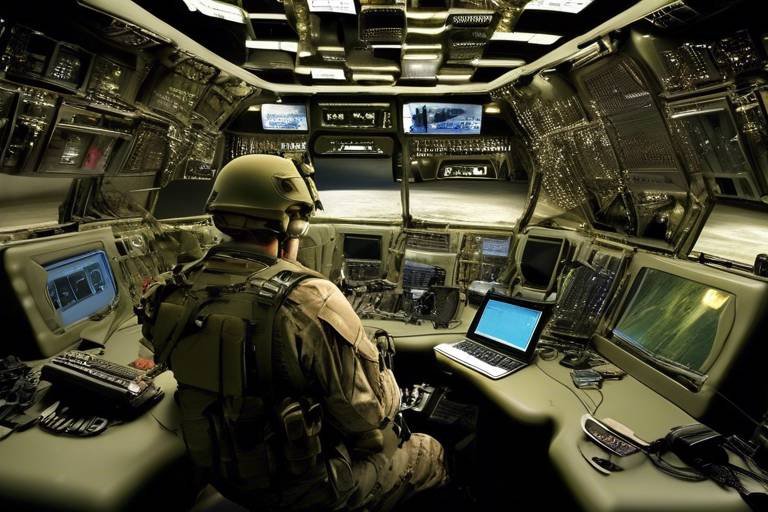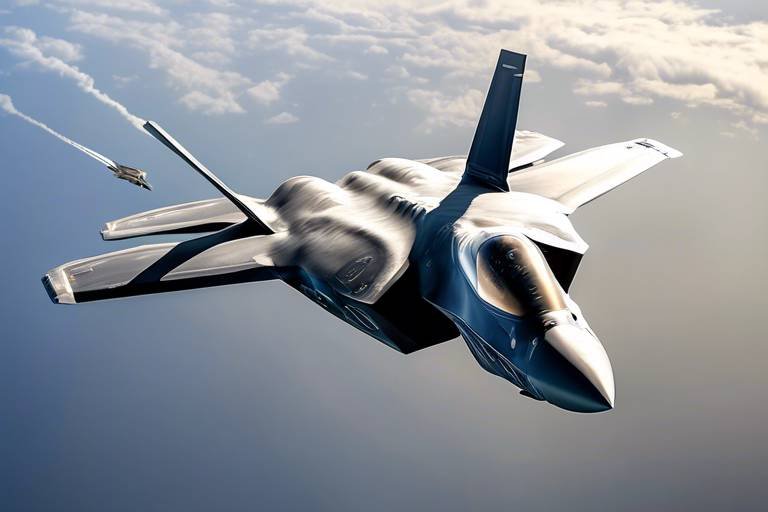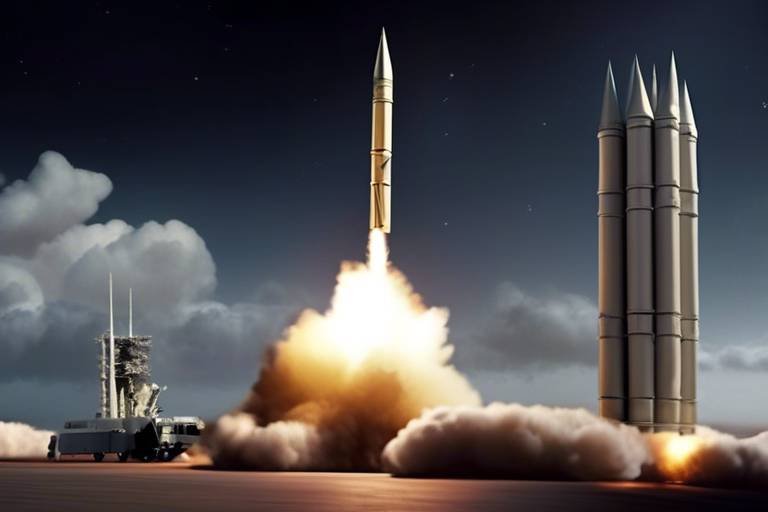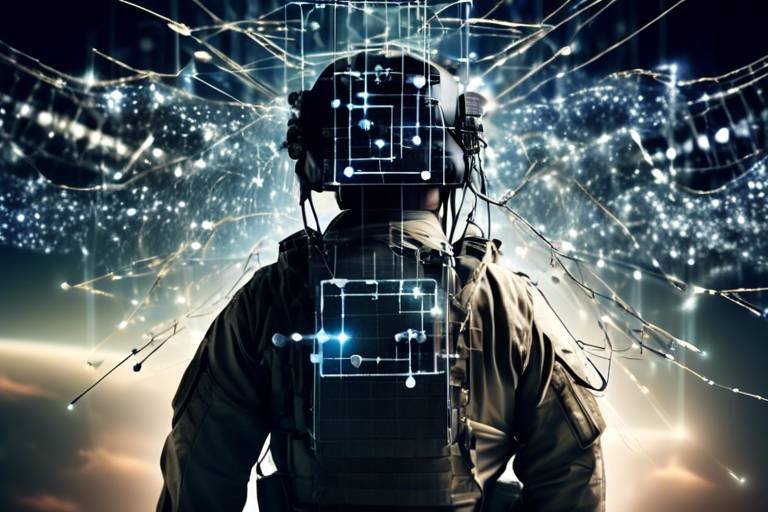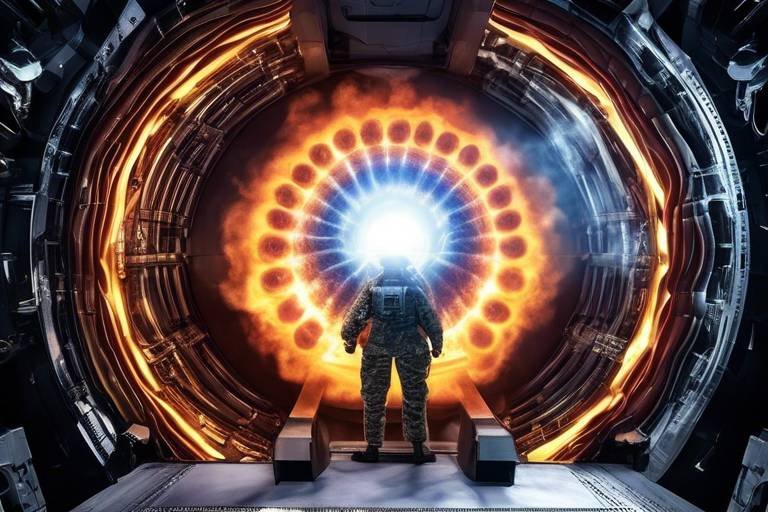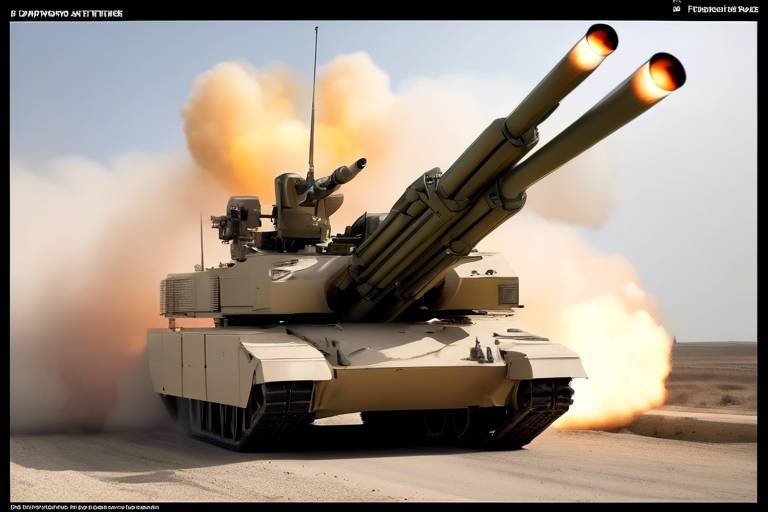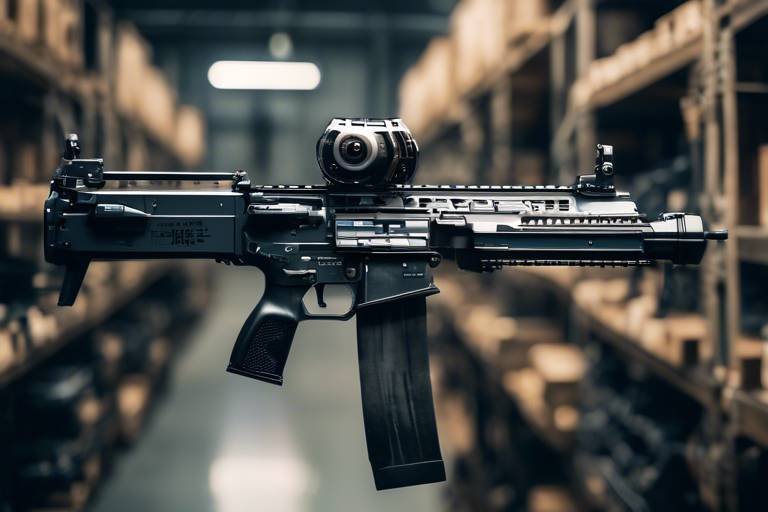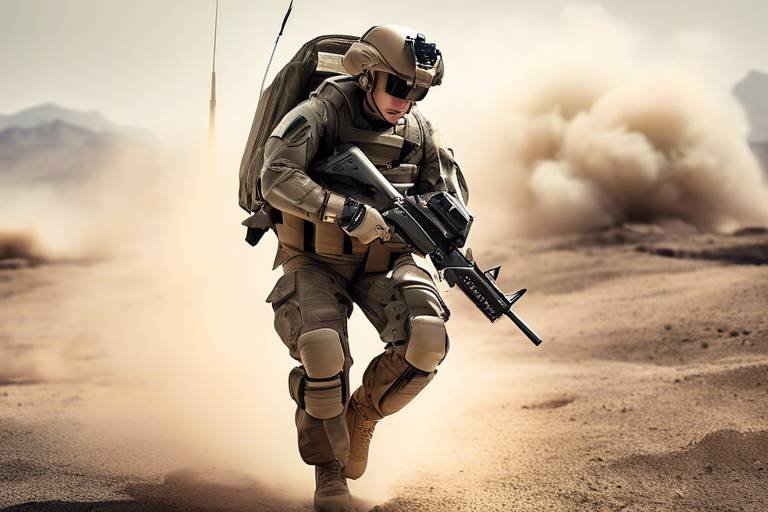Emerging Military Technologies - The Next Decade
The landscape of warfare is evolving at an unprecedented pace, driven by the rapid advancements in technology. As we look towards the next decade, it’s clear that emerging military technologies will not only reshape how conflicts are fought but also redefine the very essence of military strategy and operations. From the rise of artificial intelligence to groundbreaking developments in robotics and cybersecurity, the future of military engagement is set to become more complex and dynamic than ever before.
Imagine a battlefield where decisions are made in the blink of an eye, powered by algorithms that analyze vast amounts of data in real-time. This is not science fiction; this is the reality that military forces are gearing up to embrace. The integration of AI in warfare is expected to enhance operational efficiency and effectiveness, enabling commanders to make informed decisions faster than their adversaries.
Moreover, as the world becomes increasingly interconnected, the threats posed by cyber warfare are more pronounced. Military organizations are investing heavily in cybersecurity innovations to safeguard sensitive information and maintain operational integrity. This includes developing strategies that not only defend against cyber attacks but also incorporate offensive capabilities to deter potential threats.
Another fascinating aspect of this technological revolution is the development of directed energy weapons. These advanced systems, such as lasers and microwaves, promise to change the nature of combat by allowing for precise targeting with minimal collateral damage. As we delve deeper into these technologies, we will see how they offer new tactical advantages that were previously unimaginable.
Finally, the importance of communication systems cannot be overstated. In modern warfare, the ability to share information swiftly and securely can mean the difference between victory and defeat. Enhanced satellite communication capabilities are being developed to ensure that military forces can operate seamlessly across various platforms and environments, even in the most challenging conditions.
In summary, the next decade will witness an explosion of innovative military technologies that promise to redefine warfare. As we stand on the brink of this new era, it’s essential to understand the implications of these advancements not just for military operations, but for global security as a whole.
- What are the main emerging military technologies?
The main emerging military technologies include artificial intelligence, robotics, cybersecurity innovations, directed energy weapons, and advanced communication systems.
- How is artificial intelligence changing military strategy?
AI enhances data analysis and decision-making processes, allowing military leaders to operate more effectively and efficiently on the battlefield.
- What role do drones play in modern warfare?
Drones are used for both surveillance and combat, providing real-time intelligence and executing targeted strikes with minimal risk to human personnel.
- Why is cybersecurity important for military operations?
As cyber threats grow, protecting sensitive information and ensuring operational integrity is crucial for maintaining a strategic advantage in conflicts.
- What are directed energy weapons?
Directed energy weapons, such as lasers and microwaves, are advanced systems that allow for precise targeting and reduced collateral damage in combat situations.

Artificial Intelligence in Warfare
This article explores the innovative military technologies that are set to redefine warfare in the next decade, including advancements in artificial intelligence, robotics, cybersecurity, and more.
Artificial intelligence (AI) is revolutionizing military strategies by enabling data analysis and decision-making processes that enhance operational efficiency and effectiveness on the battlefield. Imagine a world where machines can predict enemy movements, analyze vast amounts of data in seconds, and assist commanders in making split-second decisions. This is not science fiction; it's the reality that AI is bringing to modern warfare.
One of the most significant advantages of AI in military applications is its ability to process and analyze data at an unprecedented scale. Traditional methods of intelligence gathering often involve sifting through mountains of information, which can be time-consuming and prone to human error. With AI, military analysts can leverage machine learning algorithms to identify patterns and anomalies, allowing for quicker and more accurate decision-making.
Furthermore, AI can enhance situational awareness. By integrating data from various sources—such as satellites, drones, and ground sensors—AI systems can provide commanders with a comprehensive view of the battlefield. This real-time information is crucial for making informed decisions that can mean the difference between success and failure in military operations.
Moreover, AI is being used to develop autonomous systems that can operate independently or in coordination with human soldiers. These systems can perform a variety of tasks, from reconnaissance missions to logistics support, significantly reducing the risk to human personnel. For example, AI-powered drones can conduct surveillance missions in hostile territories without putting pilots in harm's way.
However, the integration of AI into military operations does raise ethical questions and concerns about accountability. As machines take on more decision-making roles, who is responsible for their actions? This is a debate that military leaders, ethicists, and policymakers must navigate as they embrace these technologies.
To summarize, the role of artificial intelligence in warfare is multifaceted and transformative. It enhances data processing, improves situational awareness, and enables the development of autonomous systems. As we move into the next decade, the military landscape will undoubtedly be shaped by these advancements, making it essential for military organizations to adapt and evolve.
- What are the main benefits of AI in military operations? AI enhances data analysis, improves decision-making speed, and increases operational efficiency.
- How does AI improve situational awareness? AI integrates data from multiple sources to provide a comprehensive view of the battlefield.
- Are there ethical concerns regarding AI in warfare? Yes, there are debates about accountability and the moral implications of machines making life-and-death decisions.
- What types of autonomous systems are being developed? Autonomous drones for surveillance and logistics support are among the key developments.

Robotics and Autonomous Systems
The landscape of military operations is undergoing a profound transformation thanks to the rapid advancements in robotics and autonomous systems. These technologies are not just enhancing traditional warfare; they are redefining how conflicts are fought and won. Imagine a battlefield where unmanned vehicles and drones execute missions with precision and efficiency, minimizing the risk to human soldiers. This is not science fiction; it’s the reality we are stepping into. The integration of robotics into military operations allows for a new level of tactical advantage, enabling forces to adapt quickly to changing environments and threats.
One of the most exciting aspects of this technology is the development of unmanned aerial vehicles (UAVs), commonly known as drones. These flying machines are capable of performing a variety of tasks, from surveillance to combat operations. With advanced sensors and artificial intelligence, drones can analyze vast amounts of data in real-time, providing critical information that can influence the outcome of military engagements. For example, a drone equipped with high-definition cameras can gather intelligence on enemy positions, allowing commanders to make informed decisions without risking troops on the ground.
Recent innovations in drone technology are enabling more precise surveillance and targeted strikes. The evolution of drone capabilities has been nothing short of remarkable. As these machines become more sophisticated, they are equipped with features such as:
- Enhanced Navigation Systems: Utilizing GPS and advanced algorithms to navigate complex terrains.
- Artificial Intelligence: Enabling autonomous decision-making and real-time data processing.
- Advanced Payloads: Allowing for a variety of mission-specific modifications, from surveillance cameras to weaponry.
These advancements significantly change how military operations are conducted in various environments, making them more effective and less risky.
Combat drones are becoming increasingly sophisticated, integrating advanced sensors and weapons systems that enhance their effectiveness in modern warfare scenarios. These drones can engage targets with pinpoint accuracy, reducing the chances of collateral damage. For instance, a combat drone can be deployed to neutralize a specific threat without putting soldiers in harm's way. This capability not only saves lives but also allows for a more strategic approach to warfare.
On the other hand, surveillance drones play a vital role in intelligence gathering. They provide real-time data and situational awareness that help military leaders make informed decisions. The ability to monitor enemy movements and assess battlefield conditions from above gives commanders an invaluable edge. Drones can cover vast areas quickly, capturing high-resolution images and video feeds that are crucial for planning and executing operations.
Robotic ground systems are also being developed for logistics and combat support. These systems offer capabilities that improve troop safety and operational efficiency in challenging environments. For example, robotic supply vehicles can transport ammunition, food, and medical supplies to frontline troops without risking human lives. This not only streamlines logistics but also ensures that soldiers have the resources they need to succeed in their missions.
In summary, the integration of robotics and autonomous systems into military operations is revolutionizing the way wars are fought. With the ability to perform dangerous tasks without putting human lives at risk, these technologies are not just a trend; they are the future of warfare. As we look towards the next decade, it is clear that the military will continue to invest heavily in these innovations, shaping the battlefield of tomorrow.
- What are the main advantages of using robotics in military operations?
Robotics significantly reduce human risk, improve operational efficiency, and enhance tactical advantages on the battlefield. - How do drones improve military surveillance?
Drones provide real-time data and situational awareness, allowing for better decision-making and intelligence gathering. - What is the future of autonomous systems in warfare?
The future is likely to see increased integration of AI and robotics, leading to more sophisticated unmanned systems that can perform complex tasks independently.

Drone Technology Advancements
In recent years, drone technology has experienced an incredible transformation, pushing the boundaries of what is possible in military operations. These flying machines are no longer just toys or surveillance tools; they have evolved into advanced systems that can execute complex missions with precision and efficiency. Imagine a world where military leaders can deploy drones to gather intelligence, conduct strikes, and even assist in logistics—all while keeping personnel out of harm's way. This is not science fiction; it’s the reality of modern warfare.
One significant advancement in drone technology is the integration of artificial intelligence (AI). AI enables drones to analyze vast amounts of data in real-time, improving their decision-making capabilities. For instance, drones equipped with AI can identify targets more accurately, assess threats, and adapt to changing battlefield conditions without needing constant human oversight. This level of autonomy not only enhances operational effectiveness but also reduces the cognitive load on human operators, allowing them to focus on higher-level strategic decisions.
Moreover, the development of swarm technology is another game-changer. Imagine deploying a fleet of drones that can work together like a flock of birds, communicating and coordinating their actions to achieve a common goal. This capability allows for overwhelming force in a localized area, making it difficult for adversaries to respond effectively. Swarm drones can perform various tasks, from surveillance to combat, and their ability to adapt to threats in real-time makes them invaluable assets on the battlefield.
Additionally, advancements in drone materials and design have led to lighter, more durable drones that can withstand harsh environments. With improved battery technology, drones can now fly longer distances and stay airborne for extended periods, significantly enhancing their operational range. For example, some military drones can remain in the air for over 24 hours, providing continuous surveillance and support during critical missions.
To illustrate the impact of these advancements, consider the following table showcasing some of the latest drone models and their capabilities:
| Drone Model | Type | Endurance | Payload Capacity | Key Features |
|---|---|---|---|---|
| MQ-9 Reaper | Combat | 27 hours | 1,500 lbs | Precision strikes, surveillance |
| RQ-4 Global Hawk | Surveillance | 34 hours | 3,000 lbs | High-altitude reconnaissance |
| Bayraktar TB2 | Combat | 24 hours | 150 lbs | Laser-guided missiles, real-time video |
As we look to the future, the role of drones in military operations will only continue to grow. The combination of AI, swarm technology, and enhanced materials will redefine how wars are fought. With every advancement, the potential for drones to save lives while achieving military objectives becomes more apparent. Are we ready for a future where drones dominate the skies, transforming the landscape of warfare as we know it?
- How do drones enhance military operations?
Drones provide real-time intelligence, reduce human risk, and allow for precision strikes, making them invaluable in modern warfare. - What is swarm technology in drones?
Swarm technology enables multiple drones to operate together, coordinating their actions to achieve complex missions effectively. - What advancements are being made in drone battery technology?
New battery technologies are allowing drones to fly longer distances and remain airborne for extended periods, enhancing their operational capabilities.

Combat Drones
In the realm of modern warfare, have emerged as a pivotal force, fundamentally altering the dynamics of military engagement. These sophisticated unmanned aerial vehicles (UAVs) are not just flying machines; they are the epitome of technological advancement, combining precision with efficiency. Imagine a chess game where your opponent can see every move you make, but you remain hidden, striking with pinpoint accuracy. That's the essence of combat drones in today's battlefield.
Equipped with advanced sensors and weapon systems, combat drones are capable of executing a wide array of missions—from surveillance to precision strikes. Their ability to operate in hostile environments without risking human lives is a game-changer. For instance, consider the following capabilities that make combat drones indispensable:
- Real-time Intelligence Gathering: Combat drones can provide live feeds and data analysis, allowing military commanders to make informed decisions on the fly.
- Precision Targeting: With advanced targeting systems, these drones can engage specific threats while minimizing collateral damage.
- Extended Reach: Drones can cover vast distances, accessing areas that may be too dangerous for manned aircraft.
Moreover, the integration of artificial intelligence in combat drones is pushing the envelope even further. AI algorithms enable these drones to autonomously identify targets, assess threats, and execute missions with minimal human intervention. This not only speeds up the decision-making process but also reduces the potential for human error, which is crucial in high-stakes scenarios.
In the face of evolving threats, the development of combat drones is not just a trend; it’s a strategic necessity. Military forces around the globe are investing heavily in this technology, recognizing that the future of warfare will rely heavily on unmanned systems. As we look ahead, it’s clear that combat drones will play an integral role in shaping military tactics and strategies.
- What are combat drones? Combat drones are unmanned aerial vehicles designed for military operations, capable of performing surveillance, reconnaissance, and targeted strikes.
- How do combat drones enhance military operations? They provide real-time intelligence, precision targeting, and the ability to operate in high-risk areas without endangering human lives.
- Are combat drones autonomous? Many combat drones use artificial intelligence to assist in target identification and mission execution, though human operators are typically involved in decision-making.
- What are the ethical concerns surrounding combat drones? The use of combat drones raises questions about accountability, the potential for civilian casualties, and the implications of remote warfare.

Surveillance Drones
In the modern battlefield, have emerged as pivotal tools that reshape the landscape of military intelligence. These unmanned aerial vehicles (UAVs) are not just flying cameras; they are sophisticated systems equipped with cutting-edge technology that allows military forces to gather crucial information in real time. Imagine having eyes in the sky that can monitor enemy movements, assess battlefield conditions, and provide actionable intelligence without putting personnel at risk. This capability is transforming how military operations are conducted.
Surveillance drones operate by using an array of sensors and cameras, including infrared, electro-optical, and synthetic aperture radar. This multi-sensor approach enables them to perform various tasks, such as:
- Real-time reconnaissance: Drones can fly over enemy territory, capturing high-resolution images that help commanders make informed decisions.
- Target identification: By analyzing the data collected, military leaders can identify key targets before launching operations.
- Battlefield assessment: Surveillance drones provide ongoing updates about troop movements and environmental changes, ensuring that strategies are adjusted as needed.
One of the most significant advantages of surveillance drones is their ability to operate in hostile environments where human presence would be too dangerous. They can remain airborne for extended periods, allowing for continuous monitoring of specific areas. This persistent surveillance capability not only enhances situational awareness but also acts as a deterrent against enemy actions. The psychological impact of knowing that one is being watched can significantly alter the behavior of opposing forces.
Moreover, the integration of artificial intelligence into surveillance drones is pushing the boundaries of what these machines can do. AI algorithms can analyze vast amounts of data quickly, identifying patterns and anomalies that human operators might miss. This technology not only speeds up the decision-making process but also enhances accuracy in identifying threats. As these systems continue to evolve, we can expect to see even more sophisticated capabilities, such as autonomous flight paths and advanced target recognition.
As we look to the future, the role of surveillance drones in military operations will only grow. With ongoing advancements in technology, we can anticipate even greater enhancements in their capabilities, making them indispensable assets on the battlefield. The integration of machine learning and improved sensor technologies will likely lead to drones that can not only gather data but also make real-time decisions based on the information they collect.
- What are surveillance drones primarily used for? Surveillance drones are primarily used for reconnaissance, target identification, and battlefield assessment, providing real-time intelligence to military leaders.
- How do surveillance drones enhance safety for military personnel? By collecting intelligence from the air, surveillance drones reduce the need for ground troops to enter potentially dangerous areas, minimizing risk to human life.
- What technological advancements are being integrated into surveillance drones? Current advancements include enhanced sensors, artificial intelligence for data analysis, and improved flight capabilities for extended missions.
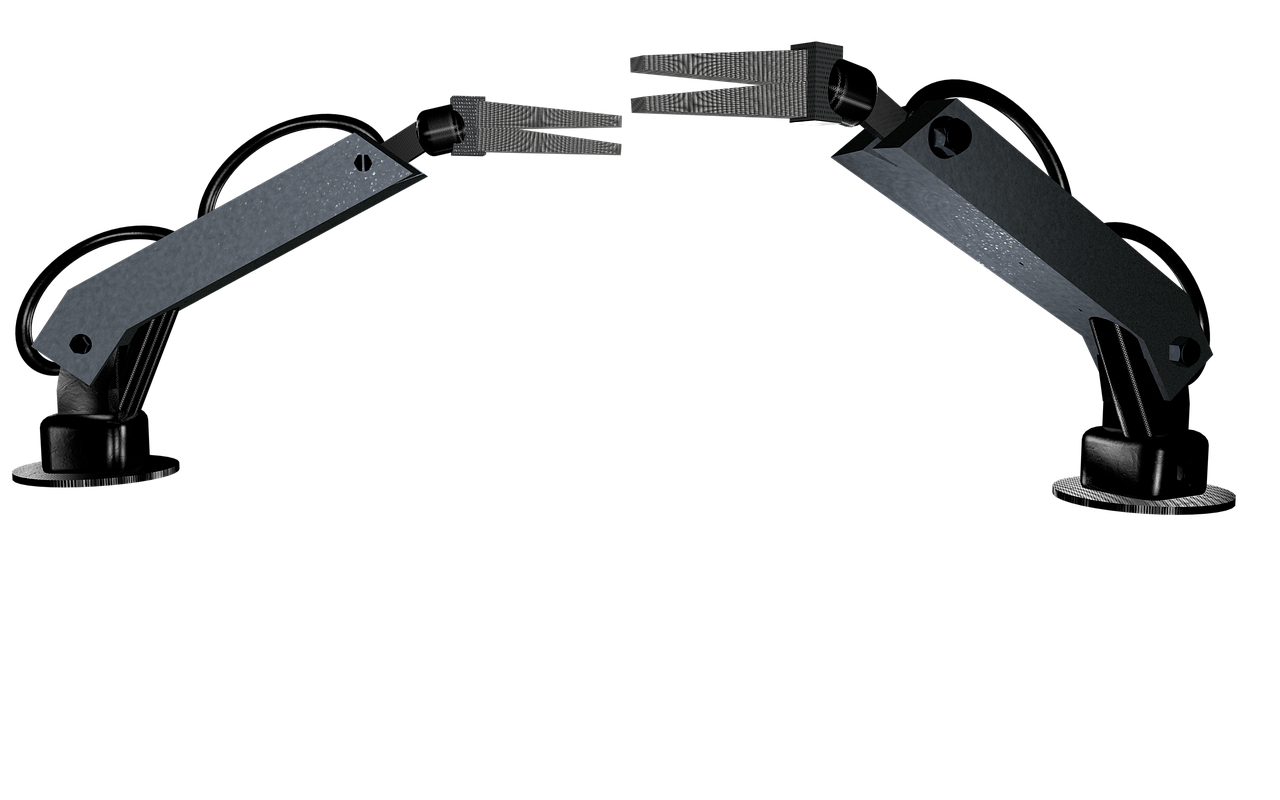
Robotic Ground Systems
The landscape of modern warfare is rapidly evolving, and at the forefront of this transformation are . These innovative technologies are designed to enhance operational capabilities while significantly reducing risks to human soldiers. Imagine a battlefield where machines do the heavy lifting, allowing troops to focus on strategy and execution rather than the dangers lurking in hostile environments. This is not just a futuristic dream; it is becoming a reality.
Robotic ground systems can perform a variety of tasks that are essential for military operations. From logistics support to direct combat assistance, these machines are equipped with advanced sensors and artificial intelligence that enable them to navigate complex terrains and make real-time decisions. For instance, consider the following roles that robotic ground systems can fulfill:
- Logistics and Supply Chain Management: Robotic systems can transport supplies, ammunition, and medical equipment to troops in the field, ensuring that they have what they need without putting human lives at risk.
- Combat Support: These robots can be deployed to assist in combat scenarios, providing cover fire or even engaging enemy forces while keeping soldiers out of harm's way.
- Reconnaissance: Equipped with cameras and sensors, robotic ground systems can gather intelligence and provide valuable situational awareness without exposing personnel to danger.
One of the most exciting aspects of robotic ground systems is their ability to work in tandem with human soldiers. This human-machine collaboration enhances the overall effectiveness of military operations. For example, a robotic unit might scout ahead, gathering information about enemy positions, while human troops follow at a safe distance, ready to act based on the intel provided. This synergy not only improves safety but also increases the speed and efficiency of operations.
Furthermore, the adaptability of robotic ground systems is a game changer. They can be programmed or reconfigured for various missions, making them versatile assets on the battlefield. As technology continues to advance, these systems will likely become even more sophisticated, incorporating features such as machine learning and autonomous navigation. This means that they will not only follow commands but also learn from their environments and improve their performance over time.
In conclusion, the integration of robotic ground systems into military operations marks a significant shift in how warfare is conducted. By enhancing logistics, providing combat support, and improving reconnaissance capabilities, these systems are set to redefine the battlefield. As we look toward the future, the potential for these technologies to save lives and increase operational efficiency is undeniable. The question is no longer if robotic ground systems will play a pivotal role in warfare, but rather how quickly they will become indispensable tools for military forces worldwide.
- What are robotic ground systems?
Robotic ground systems are unmanned vehicles designed to perform various military tasks, including logistics, reconnaissance, and combat support.
- How do robotic ground systems improve troop safety?
By taking on dangerous tasks such as supply transport and reconnaissance, these systems reduce the risk to human soldiers in hostile environments.
- Can robotic ground systems operate autonomously?
Yes, many robotic ground systems are equipped with advanced sensors and AI, allowing them to navigate and make decisions without human intervention.
- What roles do robotic ground systems play in military operations?
They can assist with logistics, provide reconnaissance, and offer combat support, among other tasks, enhancing overall operational efficiency.
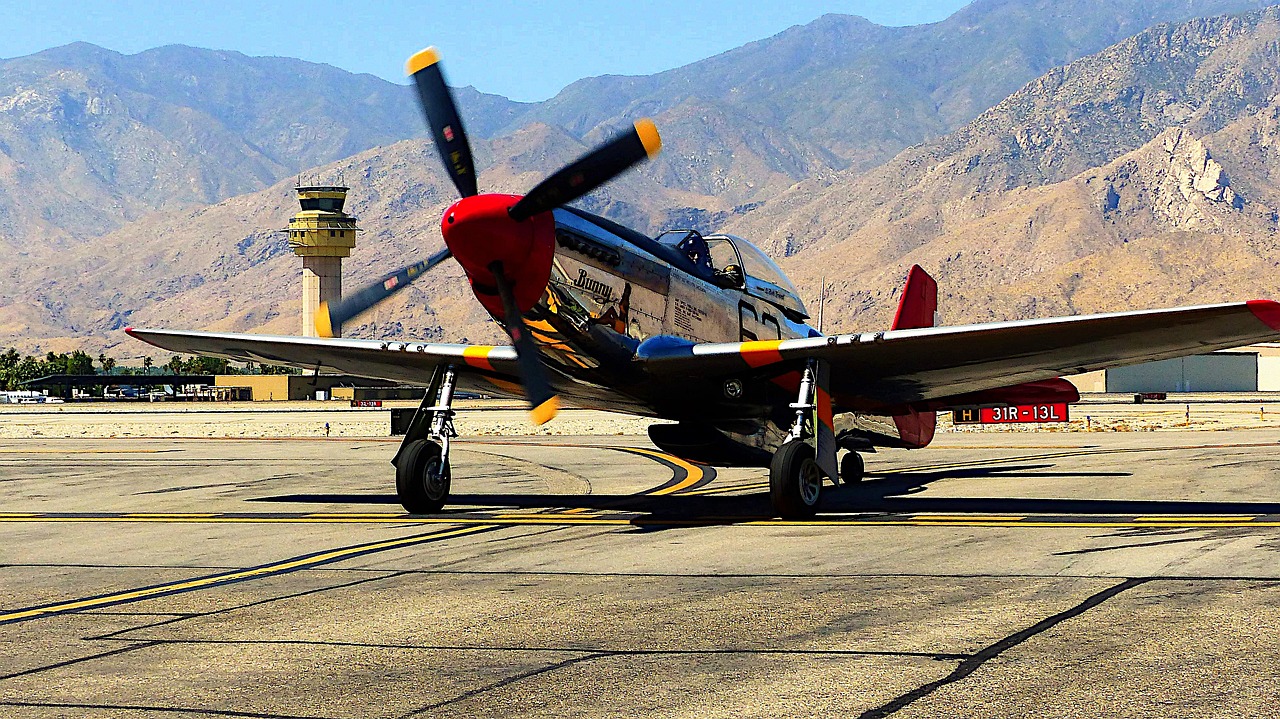
Cybersecurity Innovations
As we plunge deeper into the digital age, the threat of cyber attacks looms larger than ever, especially for military organizations. The stakes are incredibly high; a single breach could compromise sensitive information, disrupt operations, or even lead to catastrophic failures on the battlefield. To combat this ever-evolving threat landscape, military forces are investing heavily in that not only protect their assets but also enhance their operational capabilities.
One of the most exciting developments in this area is the use of machine learning algorithms to bolster defenses against cyber threats. These advanced systems can analyze vast amounts of data in real-time, identifying patterns and anomalies that might indicate a cyber attack. Imagine having a digital watchdog that never sleeps, tirelessly scanning for threats while you focus on your mission. This proactive approach allows military organizations to neutralize threats before they escalate, ensuring that their operations remain secure and effective.
Moreover, the rise of cyber warfare has necessitated the development of new strategies that integrate both offensive and defensive capabilities. Military leaders are now recognizing that in this new era of conflict, cyber capabilities are just as crucial as traditional military assets. The battlefield has expanded beyond physical terrains; it now includes the digital realm. This shift has led to the creation of specialized units trained in both cyber offense and defense, ensuring that military forces can maintain a competitive edge in modern conflicts.
To give you a clearer picture of how these innovations are shaping the future of military cybersecurity, consider the following table:
| Innovation | Description | Impact |
|---|---|---|
| Machine Learning Algorithms | Real-time data analysis to detect anomalies | Proactive threat neutralization |
| Offensive Cyber Capabilities | Strategies for disrupting enemy networks | Enhanced operational effectiveness |
| Secure Communication Protocols | Encryption and secure channels for data transfer | Protection from interception |
The need for secure communication networks cannot be overstated. As military operations become more reliant on digital communication, establishing these networks is crucial for safeguarding sensitive communications from potential interception. Advanced encryption techniques and secure protocols are being developed to ensure that information remains confidential, even in hostile environments. Think of it as creating a fortified digital fortress that shields your most valuable assets.
In conclusion, as the landscape of warfare continues to evolve, so too must the strategies and technologies that military organizations employ to protect themselves. With innovations in cybersecurity, including machine learning, offensive capabilities, and secure communication networks, the military is not only enhancing its defenses but also redefining how it approaches conflict in the digital age. The next decade promises to be a transformative period for military cybersecurity, paving the way for more secure and efficient operations on the battlefield.
- What are the main threats to military cybersecurity?
Military organizations face various cyber threats, including hacking, malware, and phishing attacks that aim to compromise sensitive information. - How does machine learning improve cybersecurity?
Machine learning algorithms can analyze data patterns to detect anomalies and potential threats in real-time, allowing for quicker responses to cyber attacks. - What role does secure communication play in military operations?
Secure communication is essential for protecting sensitive information from interception, ensuring that military operations can proceed without compromise. - What is cyber warfare?
Cyber warfare involves using digital attacks to disrupt an adversary's networks and systems, making it a critical component of modern military strategy.

Defense Against Cyber Attacks
The digital battlefield is no longer a concept of the future; it's a pressing reality that military organizations face today. As cyber threats continue to evolve, the need for robust defenses against these attacks has never been more critical. Imagine your military operations relying on data that could be compromised in an instant—this is the new paradigm of warfare. To combat these threats, innovative technologies are being deployed, employing machine learning algorithms and advanced analytics to detect and neutralize cyber threats in real-time.
One of the most significant advancements in cyber defense is the integration of artificial intelligence into security protocols. AI systems are designed to analyze vast amounts of data, identifying patterns that may indicate a cyber attack. This proactive approach allows military organizations to respond swiftly, often before an attack can cause significant damage. For instance, when a potential threat is detected, these systems can automatically initiate countermeasures, isolating affected systems and alerting human operators to take further action.
Furthermore, the implementation of threat intelligence platforms has become essential. These platforms aggregate data from various sources, providing a comprehensive overview of the current threat landscape. By analyzing this information, military organizations can anticipate potential attacks and bolster their defenses accordingly. The synergy between human expertise and machine efficiency creates a formidable barrier against cyber intrusions.
In addition to these technologies, military organizations are also focusing on training and awareness. It's not just about having the latest software; personnel must be educated on the latest cyber threats and how to recognize them. Regular training sessions and simulations can prepare military staff to respond effectively in the event of a cyber incident. This holistic approach ensures that both technology and human resources work in tandem to protect sensitive information.
To give you a clearer picture, here’s a brief overview of some key strategies employed in the defense against cyber attacks:
| Strategy | Description |
|---|---|
| Real-Time Threat Detection | Utilizes AI algorithms to monitor and respond to threats as they occur. |
| Threat Intelligence Sharing | Collaborative data sharing among military and intelligence agencies to enhance situational awareness. |
| Cyber Hygiene Training | Regular training for personnel to recognize and respond to cyber threats effectively. |
| Incident Response Protocols | Established procedures for responding to and mitigating the impact of cyber attacks. |
In conclusion, as the landscape of warfare continues to shift towards digital realms, the importance of defending against cyber attacks cannot be overstated. With the right combination of technology, training, and proactive strategies, military organizations can safeguard their operations and maintain a competitive edge in this new era of conflict. The question remains: are we ready to face the challenges that lie ahead in this digital age?
- What are the main types of cyber threats faced by military organizations? Military organizations face various cyber threats, including malware, phishing attacks, and ransomware, all of which can compromise sensitive data and disrupt operations.
- How does artificial intelligence enhance cyber defense? AI enhances cyber defense by analyzing large datasets to identify anomalies and potential threats quickly, allowing for timely intervention.
- Why is personnel training important in cyber defense? Personnel training is crucial because human error is often the weakest link in cybersecurity. Educated staff can better recognize and respond to potential threats.
- What role does threat intelligence play in cybersecurity? Threat intelligence provides insights into current and emerging threats, helping military organizations to anticipate attacks and strengthen their defenses.

Cyber Warfare Strategies
In the ever-evolving landscape of military conflict, cyber warfare has emerged as a critical domain that necessitates innovative strategies. As nations increasingly rely on digital infrastructure, the potential for cyber attacks to disrupt military operations has grown exponentially. This reality compels military organizations to adopt comprehensive cyber warfare strategies that encompass both offensive and defensive capabilities.
One of the primary elements of an effective cyber warfare strategy is the integration of offensive cyber operations. These operations are designed to disrupt, degrade, or destroy an adversary's cyber capabilities. Think of it as a digital preemptive strike; by launching attacks on an enemy's systems, a military can cripple their ability to respond effectively in a conflict. This proactive approach not only aims to neutralize threats but also serves as a deterrent against potential aggressors.
On the flip side, defensive cyber operations are equally vital. These strategies focus on protecting a military's own networks and systems from cyber threats. With the rise of sophisticated malware and hacking techniques, securing sensitive information has become paramount. Military organizations are investing heavily in advanced technologies such as machine learning algorithms and intrusion detection systems to monitor network traffic and identify potential threats in real-time. This dual approach ensures that while one arm is striking offensively, the other is firmly guarding against incoming attacks.
Moreover, the importance of collaboration cannot be overstated in the realm of cyber warfare. Military units are increasingly working alongside private sector experts and international allies to share intelligence and best practices. This collaborative effort enhances the overall effectiveness of cyber strategies, as it allows for the pooling of resources and expertise. For instance, joint exercises can simulate cyber attack scenarios, enabling military personnel to practice their response strategies in a controlled environment.
To illustrate the various components of effective cyber warfare strategies, consider the following table:
| Strategy Component | Description |
|---|---|
| Offensive Cyber Operations | Proactive measures to disrupt enemy capabilities and deter threats. |
| Defensive Cyber Operations | Protecting military networks and systems against cyber threats. |
| Collaboration | Working with private sector and international allies for intelligence sharing. |
| Training and Simulation | Conducting joint exercises to prepare for cyber attack scenarios. |
In conclusion, as we move deeper into the digital age, the significance of cyber warfare strategies will only continue to grow. The ability to effectively navigate this complex battlefield will determine the success of military operations in the future. With the right blend of offensive and defensive measures, along with collaboration and training, military organizations can ensure they remain one step ahead in this critical arena.
- What is cyber warfare? Cyber warfare refers to the use of digital attacks by one nation to disrupt the vital computer systems of another, often as part of a broader military strategy.
- How do offensive cyber operations work? Offensive cyber operations involve attacking an enemy's cyber infrastructure to disrupt their capabilities, often through hacking or deploying malware.
- Why is collaboration important in cyber warfare? Collaboration enhances intelligence sharing and resource pooling, allowing military units to develop more effective strategies against cyber threats.
- What role does training play in cyber warfare? Training prepares military personnel to respond effectively to cyber threats through simulations and joint exercises, improving their readiness and response times.

Directed Energy Weapons
Directed energy weapons (DEWs) are rapidly emerging as a revolutionary force in the realm of military technology. Unlike conventional munitions that rely on kinetic energy, DEWs utilize focused energy—such as lasers and microwaves—to engage and neutralize targets. This shift in warfare strategy is not just about new gadgets; it represents a fundamental change in how military operations are conducted. Imagine a weapon that can hit a target with pinpoint accuracy without the collateral damage often associated with traditional explosives. That's the promise of directed energy technology, and it's set to reshape the battlefield of the future.
One of the most significant advantages of directed energy weapons is their precision. Laser systems, for instance, can be finely tuned to target specific threats, such as incoming missiles or enemy drones, while minimizing the risk to surrounding civilians and infrastructure. This capability is crucial in modern warfare, where the lines between combatants and non-combatants are increasingly blurred. In addition, DEWs require significantly less logistical support than traditional munitions. With no need for physical ammunition, the operational costs and supply chain complexities are greatly reduced, allowing military forces to maintain a higher state of readiness.
Moreover, directed energy weapons offer a sustainable solution to military engagements. Since they rely on electrical energy, DEWs can be powered by existing military infrastructure, reducing the need for resupply missions that can expose troops to danger. This self-sufficiency is a game changer, especially in remote or hostile environments where traditional supply lines are vulnerable. As we look towards the future, the integration of DEWs into military arsenals will likely become a standard practice, enhancing both offensive and defensive capabilities.
Laser systems are perhaps the most well-known type of directed energy weapon. These systems can be deployed for a variety of military applications, including missile defense, disabling enemy equipment, and even crowd control. The ability to engage targets at the speed of light means that the response time is virtually instantaneous, providing a significant tactical advantage. For example, the U.S. Navy has been testing laser weapons aboard its ships, successfully demonstrating their ability to neutralize small boats and drones. Such advancements could redefine naval warfare, allowing for a more agile and responsive maritime force.
On the other hand, high-powered microwave (HPM) weapons represent another exciting frontier in directed energy technology. These weapons can emit bursts of microwave energy that disrupt or disable electronic systems, making them particularly effective against enemy drones or missile guidance systems. The non-lethal nature of HPM weapons also opens up new avenues for engagement, allowing military forces to incapacitate threats without resorting to lethal force. This capability could be invaluable in urban environments, where minimizing civilian casualties is a top priority.
In conclusion, directed energy weapons are not just a passing trend; they are poised to become a cornerstone of military strategy in the coming decades. With their ability to provide precise, cost-effective, and sustainable solutions to modern warfare challenges, DEWs will likely play a critical role in shaping the future of military operations.
- What are directed energy weapons?
Directed energy weapons are systems that use focused energy, such as lasers or microwaves, to engage and neutralize targets without traditional munitions. - What advantages do directed energy weapons offer?
They provide precision targeting, reduced logistical needs, and the ability to operate sustainably in various environments. - How are laser systems used in military applications?
Laser systems can be used for missile defense, disabling enemy equipment, and even crowd control, offering a tactical advantage due to their speed and accuracy. - What is the role of high-powered microwave weapons?
HPM weapons emit bursts of microwave energy that can disrupt or disable electronic systems, making them effective against drones and missile guidance systems.

Laser Systems
Laser systems are rapidly becoming one of the most fascinating and effective technologies in modern military operations. Imagine a weapon that can precisely target and neutralize threats with minimal collateral damage—this is the promise of laser technology. Unlike traditional munitions that rely on explosive force, lasers deliver energy in a focused beam, allowing for pinpoint accuracy. This capability not only reduces the risk of unintended destruction but also enhances operational efficiency.
One of the most significant advantages of laser systems is their cost-effectiveness. Once established, the cost per shot is remarkably low compared to conventional weapons. Traditional missiles can cost tens of thousands, if not millions, of dollars, while a laser system can fire at a fraction of that cost, using only electricity to engage targets. This economic efficiency allows military forces to engage multiple threats without depleting their resources.
Laser systems are being developed for various applications, including:
- Missile Defense: Laser systems can intercept incoming projectiles, providing a robust defense mechanism against aerial threats.
- Disabling Enemy Equipment: Lasers can disable sensors, electronics, and even vehicles without causing permanent damage, allowing for strategic advantages in combat.
- Targeting Precision: The ability to focus on a specific point means that laser systems can engage targets with unprecedented accuracy, which is crucial in densely populated areas where collateral damage must be minimized.
Recent developments have led to the creation of high-energy laser systems that can operate effectively in various environments, including harsh weather conditions. These systems utilize advanced cooling technologies and targeting systems that ensure they remain operational even in challenging scenarios. The integration of artificial intelligence further enhances their capabilities, allowing for rapid target recognition and engagement.
However, the deployment of laser systems is not without challenges. Issues such as atmospheric interference, which can scatter the laser beam, and the need for significant power sources must be addressed. Nevertheless, ongoing research and development are paving the way for more robust and reliable laser systems that could redefine how military engagements are conducted.
- What are laser systems used for in the military? Laser systems are primarily used for missile defense, disabling enemy equipment, and providing precise targeting in combat scenarios.
- How do laser systems compare to traditional weapons? Laser systems offer lower operational costs, greater precision, and reduced collateral damage compared to conventional weapons.
- Are there limitations to laser systems? Yes, challenges such as atmospheric interference and power supply requirements need to be addressed for optimal performance.

High-Powered Microwave Weapons
High-powered microwave weapons (HPMWs) represent a fascinating frontier in military technology, offering a unique approach to modern warfare. Imagine a weapon that can incapacitate enemy electronics without causing physical harm to personnel or infrastructure. This revolutionary capability is not just a concept from a science fiction movie; it’s becoming a reality on the battlefield. HPMWs utilize concentrated microwave energy to disrupt or disable electronic systems, making them an effective solution for a variety of military applications.
One of the most intriguing aspects of HPMWs is their ability to deliver non-lethal force. In situations where minimizing collateral damage is crucial, these weapons can target enemy drones, vehicles, and communication systems without the risk of civilian casualties. This precision strikes a balance between maintaining operational effectiveness and adhering to ethical considerations in warfare. Furthermore, the deployment of HPMWs can significantly reduce the need for traditional munitions, which are often costly and can lead to unintended destruction.
In terms of functionality, HPMWs can be categorized based on their deployment methods. Some systems are designed for ground-based operations, while others are mounted on vehicles or aircraft. The versatility of these weapons allows military forces to adapt to various combat scenarios. For instance, a mobile HPMW system can be rapidly deployed to counter threats in dynamic environments, providing a tactical edge against adversaries who rely heavily on electronic systems.
Moreover, the development of HPMWs is not without its challenges. Engineers and military strategists must address issues such as power supply, range, and the potential for countermeasures from adversaries. As technology advances, the effectiveness of HPMWs will likely improve, making them an integral part of future military arsenals. The ongoing research and development in this field are indicative of a broader trend towards the integration of advanced technologies in defense strategies.
As we look toward the future, the implications of high-powered microwave weapons extend beyond the battlefield. Their ability to disable enemy systems could alter the landscape of cyber warfare, where electronic dominance is increasingly critical. The integration of HPMWs into military operations may redefine how conflicts are fought, emphasizing the importance of technological superiority over sheer firepower.
- What are high-powered microwave weapons?
High-powered microwave weapons are advanced military systems that use concentrated microwave energy to disable electronic devices without causing physical harm. - How do HPMWs differ from traditional weapons?
Unlike traditional weapons that cause physical destruction, HPMWs focus on incapacitating enemy electronics, making them a non-lethal option for military engagements. - What are the potential applications of HPMWs?
HPMWs can be used to target drones, vehicles, and communication systems, providing a tactical advantage while minimizing collateral damage. - Are there any challenges associated with HPMWs?
Yes, challenges include power supply, effective range, and the potential for adversaries to develop countermeasures.

Next-Generation Communication Systems
The landscape of military operations is evolving rapidly, and at the heart of this transformation are . These systems are not just about transmitting messages; they represent a revolutionary shift in how military forces coordinate and share information in real-time. Imagine a battlefield where every unit, from ground troops to aerial drones, is seamlessly connected, sharing vital intel at lightning speed. This is the future that advanced communication technologies are paving the way for.
One of the most significant advancements in this domain is the development of secure communication networks. As military operations become increasingly reliant on technology, the need for robust security measures has never been more critical. These networks are designed to safeguard sensitive communications from interception and cyber threats. By employing state-of-the-art encryption methods and multi-layered security protocols, military personnel can communicate with confidence, knowing that their strategies and plans are protected from prying eyes.
Additionally, the enhancements in satellite communication capabilities have drastically improved connectivity, even in the most remote or hostile environments. This is crucial for modern military operations where soldiers might find themselves far from traditional communication infrastructures. With improved satellite systems, troops can maintain a constant link to command centers, receive real-time updates, and coordinate actions effectively, regardless of their location. This level of connectivity not only boosts operational efficiency but also enhances the safety of personnel on the ground.
Moreover, these next-generation systems are equipped with advanced features such as data encryption, jam-resistant frequencies, and interoperability across various platforms. This means that whether a unit is using ground vehicles, naval ships, or aerial drones, they can communicate effortlessly, sharing vital information without the risk of miscommunication or interference. To illustrate this, consider the following table that outlines some of the key features of next-generation communication systems:
| Feature | Description |
|---|---|
| Data Encryption | Ensures that all communications are secure and cannot be intercepted. |
| Jam-Resistant Frequencies | Utilizes frequencies that are less susceptible to jamming by adversaries. |
| Interoperability | Allows different military branches and units to communicate seamlessly. |
| Real-Time Data Sharing | Facilitates immediate transmission of information, enhancing decision-making. |
In conclusion, the rise of next-generation communication systems is set to redefine military operations. With secure networks and enhanced satellite capabilities, military forces can operate with greater efficiency and safety. The integration of these technologies not only prepares them for contemporary challenges but also positions them to tackle future threats effectively. As we look forward to the next decade, it's clear that communication will be a cornerstone of military strategy, enabling forces to adapt, respond, and prevail in an ever-changing landscape.
- What are next-generation communication systems?
These are advanced military communication technologies designed to enhance coordination, security, and information sharing among military forces. - How do secure communication networks protect military operations?
They use encryption and multi-layered security protocols to safeguard sensitive information from interception and cyber threats. - Why is satellite communication important for military operations?
It ensures connectivity in remote areas, allowing troops to maintain communication with command centers and receive critical updates. - What features make next-generation communication systems effective?
Key features include data encryption, jam-resistant frequencies, interoperability, and real-time data sharing.

Secure Communication Networks
In today's fast-paced military landscape, the need for has never been more critical. As conflicts evolve and technology advances, military forces must ensure that their communications remain protected from interception and cyber threats. Imagine a battlefield where every message, order, and piece of intelligence is vulnerable to enemy eyes—this is a scenario that military strategists are keen to avoid. Thus, investing in robust communication infrastructures is not just a priority; it's a necessity.
Secure communication networks serve as the backbone of military operations, allowing for the seamless flow of information while safeguarding sensitive data. These networks utilize a combination of encryption technologies, secure transmission protocols, and advanced authentication methods to create an impenetrable barrier against potential intrusions. For instance, when a commander issues an order, it travels through a series of encrypted channels, ensuring that only authorized personnel can access the information. This level of security is paramount, especially in high-stakes environments where the cost of a breach could be catastrophic.
Moreover, the integration of artificial intelligence in these networks enhances their security. AI algorithms can analyze communication patterns, detect anomalies, and respond to threats in real-time. This proactive approach allows military units to stay one step ahead of adversaries who might attempt to exploit vulnerabilities. The implementation of such technologies not only fortifies communication lines but also boosts overall operational efficiency.
To illustrate the significance of secure communication networks, consider the following table that highlights key features and benefits:
| Feature | Benefit |
|---|---|
| End-to-End Encryption | Protects data from interception during transmission. |
| Real-Time Threat Detection | Identifies and neutralizes threats as they occur. |
| Multi-Factor Authentication | Ensures only authorized personnel gain access to sensitive information. |
| Redundant Communication Channels | Maintains communication even if one channel is compromised. |
In addition to these technological advancements, training personnel to recognize and respond to potential security threats is equally important. Regular drills and simulations can prepare military members to handle breaches effectively, ensuring that everyone is on the same page when it comes to security protocols. After all, technology is only as strong as the people who use it.
As we look to the future, the development of secure communication networks will continue to be a focal point for military organizations. The integration of cutting-edge technologies, combined with rigorous training and strategic planning, will fortify military communications against an ever-evolving array of threats. In a world where information is power, ensuring that this information remains secure is not just advantageous; it is essential for success on the battlefield.
- What are secure communication networks?
Secure communication networks are systems designed to protect military communications from interception and cyber threats through encryption and advanced security protocols. - Why is encryption important in military communications?
Encryption ensures that sensitive information is only accessible to authorized personnel, preventing adversaries from gaining access to critical data. - How does AI enhance secure communication networks?
AI can analyze communication patterns and detect anomalies, allowing for real-time threat detection and response. - What role does training play in maintaining secure communication?
Training personnel to recognize and respond to security threats is crucial for ensuring that communication systems are used effectively and securely.

Satellite Communication Enhancements
In the ever-evolving landscape of military operations, are proving to be a crucial asset that ensures seamless coordination and information sharing among forces. As conflicts become more complex and geographically dispersed, the need for robust communication systems becomes paramount. Imagine a battlefield where every soldier, drone, and command center is interconnected in real-time; this is the future that advanced satellite technologies are paving the way for.
One of the most significant advancements in this realm is the development of high-throughput satellites (HTS). Unlike traditional satellites, HTS can transmit a substantially larger amount of data, enabling high-speed internet access and improved communication capabilities. This leap in technology allows military personnel to share intelligence and coordinate operations without the delays that could mean the difference between success and failure. For instance, during a critical mission, commanders can receive live video feeds from drones or ground units, making tactical decisions based on the most current data available.
Moreover, the integration of software-defined satellites (SDS) is revolutionizing military communications. These satellites can be reprogrammed on the fly to meet changing mission needs or to adapt to specific operational requirements. This flexibility is essential in modern warfare, where adaptability can significantly enhance a unit's effectiveness. With SDS, military communication can be tailored to specific missions, allowing for a more dynamic and responsive approach to operations.
Additionally, advancements in anti-jamming technologies are enhancing the resilience of military communications. In a conflict scenario, the enemy may attempt to disrupt communications through jamming techniques. New technologies are being developed to counteract these threats, ensuring that military forces can maintain critical lines of communication even under duress. This capability is vital for operational success, as it allows units to remain coordinated and informed despite attempts to sever their connectivity.
Furthermore, the emergence of low Earth orbit (LEO) satellite constellations is set to change the game entirely. These constellations consist of numerous small satellites that orbit closer to the Earth, providing lower latency and higher bandwidth. This means that military forces can communicate more effectively, even in remote or hostile environments where traditional satellite systems might struggle. The rapid deployment and scalability of LEO satellites make them an attractive option for enhancing military communication capabilities.
In summary, the enhancements in satellite communication are not just about keeping in touch; they are about transforming the very nature of military operations. With improved data transmission, adaptability, and resilience against interference, modern military forces are better equipped to face the challenges of contemporary warfare. The future of military communication is bright, and as technology continues to advance, we can expect even more revolutionary changes that will redefine how militaries operate globally.
- What are high-throughput satellites (HTS)?
HTS are advanced communication satellites capable of transmitting significantly larger amounts of data compared to traditional satellites, enabling faster communication for military operations. - How do software-defined satellites (SDS) work?
SDS can be reprogrammed in real-time to adapt to changing mission requirements, providing flexibility and efficiency in military communications. - What is the significance of low Earth orbit (LEO) satellites?
LEO satellites orbit closer to the Earth, providing lower latency and higher bandwidth, which enhances communication capabilities in remote or challenging environments. - How do anti-jamming technologies enhance military communications?
These technologies help protect military communications from enemy attempts to disrupt signals, ensuring that forces can maintain critical lines of communication during operations.
Frequently Asked Questions
- What are some key advancements in artificial intelligence for military use?
Artificial intelligence is transforming military strategies by enhancing data analysis and decision-making processes. These advancements allow military leaders to operate with greater efficiency and effectiveness on the battlefield, enabling faster responses to dynamic situations.
- How are robotics and autonomous systems changing military operations?
Robotics and autonomous systems are revolutionizing military operations by allowing unmanned vehicles and drones to perform high-risk tasks. This minimizes human risk while providing tactical advantages, such as improved surveillance and logistics support.
- What role do drones play in modern warfare?
Drones are essential in modern warfare for both combat and surveillance. Combat drones are equipped with advanced sensors and weapons systems, while surveillance drones provide real-time data, helping military leaders make informed decisions during operations.
- How does cybersecurity impact military effectiveness?
As cyber threats increase, military organizations are investing heavily in cybersecurity innovations to protect sensitive information. These measures ensure the integrity of operations and help defend against potential cyber attacks that could disrupt military effectiveness.
- What are directed energy weapons and their advantages?
Directed energy weapons, such as lasers and high-powered microwaves, are emerging technologies that offer precise targeting and reduced collateral damage. They provide a cost-effective means of engagement in combat situations, enhancing operational efficiency.
- What improvements are being made in military communication systems?
Next-generation communication systems are enhancing military coordination by establishing secure networks and improving satellite communication capabilities. These advancements ensure seamless information sharing across various platforms, even in challenging environments.

